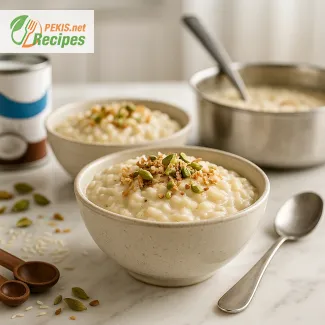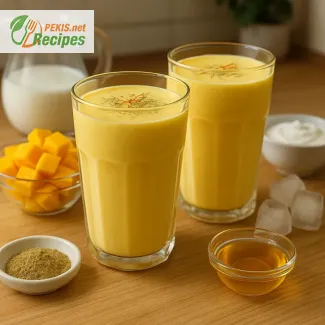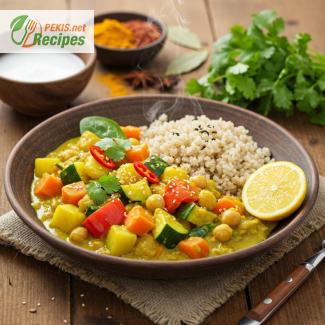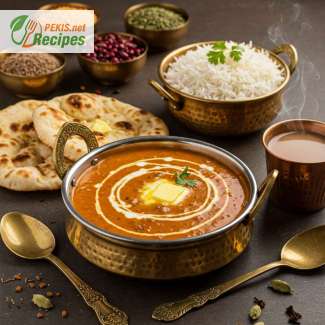
The Ultimate Vegetable Biryani – A Fragrant and Flavorful Delight
A Classic Dish Packed with Aromatic Spices and Fresh Vegetables
Few dishes in the world offer the perfect balance of rich aromas, bold spices, and wholesome ingredients quite like vegetable biryani. This beloved dish, a staple in South Asian cuisine, is more than just a simple rice and vegetable combination—it is a celebration of flavors, textures, and tradition. Whether served at a festive gathering or enjoyed as a comforting homemade meal, this vegetarian masterpiece never fails to impress.
Biryani is known for its layered cooking technique, where basmati rice, vegetables, and a medley of spices are cooked together to create a harmonious blend of flavors. Each bite is infused with the essence of saffron, cumin, cardamom, cinnamon, and bay leaves, offering an explosion of aromatic depth that is both satisfying and indulgent.
Unlike simple vegetable rice dishes, biryani is prepared using a dum cooking method, where the ingredients are slow-cooked together, allowing the spices and herbs to permeate every grain of rice. This process results in a dish that is fragrant, flavorful, and irresistibly delicious.
Why Vegetable Biryani Stands Out
What makes vegetable biryani truly special is its versatility and richness. This dish is not just about the spices—it is about layering flavors in a way that brings out the best in every ingredient. The combination of carrots, peas, bell peppers, potatoes, and green beans provides a natural sweetness and texture that complements the warm, earthy spices.
Additionally, the use of yogurt, tomatoes, and fresh herbs like cilantro and mint enhances the depth of flavor, ensuring that every spoonful is vibrant and full-bodied. The addition of toasted nuts like cashews or almonds provides a delightful crunch, making each bite even more enjoyable.
For those who appreciate a little extra indulgence, saffron-infused milk is often drizzled over the rice before cooking, imparting a golden hue and a delicate floral aroma that makes this dish even more inviting.
The Perfect One-Pot Meal for Any Occasion
One of the greatest advantages of vegetable biryani is its wholesome and nutritious composition. Since it is packed with fiber-rich vegetables and protein from legumes, it serves as a well-balanced meal that is both filling and nourishing. Whether served as a standalone dish or paired with cooling raita, tangy pickles, or crispy papadums, biryani always offers a satisfying and complete dining experience.
Another reason why this dish is widely loved is its ability to be customized. You can adjust the spice levels, choose your favorite vegetables, and even enhance it with paneer or tofu for an added boost of protein. Whether you prefer it mild or fiery, light or rich, there is a version of vegetable biryani that suits every palate.
Health Benefits of Vegetable Biryani
Apart from its exceptional taste, vegetable biryani also offers numerous health benefits:
- High in fiber – Thanks to the vegetables and basmati rice, this dish aids in digestion and gut health.
- Rich in antioxidants – The spices like turmeric, cumin, and cinnamon contain powerful anti-inflammatory properties that support immune health.
- Good source of plant-based protein – When made with lentils or chickpeas, it becomes an excellent protein-rich option for vegetarians and vegans.
- Boosts metabolism – Ingredients like ginger, garlic, and chili peppers help improve digestion and metabolism.
- Supports heart health – The use of healthy fats like ghee or olive oil contributes to balanced cholesterol levels.
These benefits make vegetable biryani not just a delightful treat but also a nutritious addition to any meal plan.
A Dish That Brings People Together
Biryani is more than just a meal—it is a cultural experience. From its origins in the royal kitchens of the Mughal Empire to its adaptation in various regions around the world, each version of biryani tells a story. Whether it's Hyderabadi, Lucknowi, Kolkata, or South Indian-style biryani, every variation has its own unique twist while staying true to the fundamental essence of the dish.
Preparing vegetable biryani is often a shared experience, bringing families and friends together to celebrate the art of cooking. The process of layering the ingredients, sealing the pot, and waiting patiently for the flavors to meld builds anticipation, making the final dish all the more rewarding.
Whether you're preparing it for a special occasion or simply enjoying a comforting homemade meal, vegetable biryani always delivers an unforgettable dining experience.
So, gather your fresh vegetables, fragrant spices, and high-quality basmati rice, and get ready to create a dish that is as stunning as it is delicious!
- Prepare the rice: Rinse the basmati rice under cold running water until the water runs clear. Soak it in water for 20 minutes, then drain.
- Sauté the aromatics: In a deep pan, heat ghee or vegetable oil over medium heat. Add cumin seeds, bay leaves, cardamom, cinnamon stick, and cloves. Sauté until fragrant.
- Cook the onions: Add sliced onions and cook until golden brown. Stir in garlic and ginger and sauté for another minute.
- Add vegetables and spices: Stir in tomatoes, potatoes, carrots, green beans, peas, and bell peppers. Cook for 3–5 minutes, allowing the vegetables to soften. Add turmeric, coriander powder, red chili powder, garam masala, and salt. Mix well.
- Combine yogurt and broth: Stir in yogurt and vegetable broth, letting the mixture simmer for 5 minutes. Add fresh cilantro and mint.
- Layering the biryani: In a separate pot, bring 750 ml (3 cups) water to a boil. Add the soaked basmati rice and cook until 70% done (grains should still be slightly firm). Drain.
- Assemble the dish: Layer half of the vegetable mixture at the bottom of a large pot, followed by half of the partially cooked rice. Repeat the process, then drizzle saffron-infused milk over the top.
- Dum cooking (slow steaming): Cover with a tight-fitting lid and cook over low heat for 20 minutes. If needed, seal the pot with foil before covering to trap steam.
- Finishing touches: Remove from heat and let rest for 5 minutes before fluffing with a fork. Garnish with toasted cashews and extra cilantro if desired.
Elevate Your Vegetable Biryani – Expert Tips and Flavor Enhancements
Understanding the Essence of Vegetable Biryani
Vegetable biryani is a dish that perfectly balances aromatic spices, fragrant rice, and tender vegetables, creating a rich and satisfying culinary experience. While the traditional method results in an already delightful dish, slight modifications can elevate the flavors, texture, and presentation. Whether you want to enhance the depth of the spices, introduce new ingredients, or adjust the texture, small tweaks can make a significant difference.
The secret behind an exceptional vegetable biryani lies in the quality of ingredients, layering technique, and slow-cooking method. From choosing the right rice to balancing the spice mix, every step contributes to the final outcome. By experimenting with additional spices, richer ingredients, and different cooking techniques, you can create a version of biryani that suits your personal taste and elevates the traditional flavors to the next level.
Choosing the Right Basmati Rice for Perfect Texture
One of the most crucial elements of a well-made vegetable biryani is the rice itself. The best choice is long-grain aged basmati rice, as it remains light, fluffy, and separate when cooked. If you want to improve the texture and fragrance, consider:
- Soaking the rice for 30 minutes instead of 20 – This allows the grains to absorb more water and expand, leading to a softer texture while maintaining structure.
- Toasting the rice lightly in ghee or butter before boiling – This adds a nutty aroma and enhances the overall fragrance.
- Using a mixture of saffron-infused milk and rose water – This brings out a delicate floral essence, making the dish more aromatic.
If basmati rice is unavailable, you can substitute it with jasmine rice for a slightly softer texture or parboiled rice (sella basmati) for a firmer, more structured grain.
Enhancing the Spice Profile for a More Intense Aroma
Spices are the heart of vegetable biryani, and adjusting them can dramatically alter the depth of flavor. Some ways to enhance or modify the spice mix include:
- Increasing the quantity of whole spices – More cardamom, cinnamon, and cloves will give the biryani an earthier and more pronounced aroma.
- Adding black cardamom – This provides a stronger, smoky essence that deepens the overall flavor.
- Using freshly ground spices instead of pre-ground powders – This enhances the intensity and provides a purer, more robust spice profile.
- Introducing star anise or fennel seeds – These spices contribute a slight sweetness that balances the heat.
- Adjusting chili levels – If you prefer a milder biryani, reduce the red chili powder and replace it with sweet paprika for color without extra heat.
The key is to layer the spices correctly—starting with whole spices in the oil and later incorporating ground spices into the vegetable mixture ensures a complex and well-balanced profile.
Using Different Vegetables to Add Unique Textures
While the classic recipe includes carrots, peas, green beans, bell peppers, and potatoes, introducing additional vegetables can change the texture and sweetness of the dish. Consider:
- Adding cauliflower florets – This absorbs the spices well and adds a slightly nutty flavor.
- Including mushrooms – These bring an umami depth that makes the biryani more savory and hearty.
- Using sweet corn kernels – This introduces a mild sweetness that balances the heat from the spices.
- Replacing potatoes with sweet potatoes – This creates a richer, creamier bite and enhances the natural sweetness.
Additionally, roasting or sautéing vegetables before layering them can bring out deeper, caramelized flavors, making the final dish even more flavorful.
Elevating the Richness and Creaminess
If you prefer a richer biryani, consider enhancing the creamy components:
- Substituting regular yogurt with Greek yogurt – This provides a thicker, creamier base for the vegetables.
- Adding coconut milk instead of vegetable broth – This gives the dish a subtle sweetness and a silky texture.
- Incorporating a handful of ground cashews or almonds – This creates a luxurious, creamy consistency in the vegetable masala.
- Using saffron-infused heavy cream instead of milk** – This makes the biryani even more indulgent and fragrant.
By adding these elements, you can intensify the richness without overpowering the dish’s natural balance.
Experimenting with Proteins for a Heartier Dish
Although vegetable biryani is typically plant-based, you can incorporate extra protein sources to make it more nutritious and filling:
- Paneer (Indian cottage cheese) – Cubes of pan-seared paneer add a creamy, slightly chewy texture that pairs well with the spices.
- Chickpeas or lentils – These provide an earthy, protein-packed bite, making the dish more satisfying.
- Tofu – A great vegan alternative, tofu absorbs the spices well and adds subtle chewiness.
For an added layer of complexity, marinate paneer or tofu in yogurt, turmeric, and garam masala before adding it to the dish.
Garnishing for the Perfect Presentation and Crunch
A beautifully garnished vegetable biryani is visually appealing and adds contrast in texture. Enhancements include:
- Crispy fried onions – Provides a sweet and crunchy topping that enhances depth.
- Toasted cashews or almonds – Brings a buttery crunch and richness.
- Pomegranate seeds – Adds a burst of sweetness and vibrant color.
- Chopped cilantro and mint – Creates a fresh and herby balance against the warm spices.
Sprinkling ghee or butter over the final dish before serving also enhances shine, aroma, and richness.
Adjusting the Cooking Method for Maximum Flavor
While traditional dum cooking (slow-cooking in a sealed pot) yields the best flavor, alternative methods can also enhance the dish:
- Cooking the rice separately with whole spices ensures even texture.
- Baking the biryani in the oven (covered at 180°C (350°F) for 20 minutes) creates a lightly crisped top layer.
- Using a pressure cooker or Instant Pot speeds up cooking while keeping flavors intact.
The key is not overcooking the vegetables—keeping them slightly firm helps retain their natural sweetness and prevents them from becoming mushy.
The Art of Customizing Vegetable Biryani to Your Preference
The beauty of vegetable biryani is its ability to be customized while still maintaining its authentic character. Whether you prefer a lighter, spicier, creamier, or richer variation, small tweaks in ingredients and techniques can transform the dish into something uniquely suited to your taste.
By experimenting with different spices, vegetables, proteins, and cooking methods, you can take this timeless dish and make it your own while still preserving its traditional essence. No matter how you modify it, a well-made vegetable biryani will always be a dish that delights the senses and satisfies the soul.
- Contains dairy (yogurt, ghee) and tree nuts (cashews) if included.
- Naturally gluten-free, but ensure that all ingredients (especially spice blends) are certified gluten-free if necessary.
Ingredient Substitutions for Allergies & Dietary Preferences:
- For a dairy-free version: Replace yogurt with coconut yogurt and use vegetable oil instead of ghee.
- For a nut-free version: Omit cashews or replace them with sunflower seeds.
- For added protein: Add chickpeas or paneer.
- Vitamin A: 450 mcg – Supports eye health and immunity.
- Vitamin C: 25 mg – Boosts immune function and collagen production.
- Vitamin K: 20 mcg – Aids in blood clotting and bone health.
- Iron: 3 mg – Essential for oxygen transport in the blood.
- Magnesium: 45 mg – Supports muscle and nerve function.
- Potassium: 350 mg – Helps maintain fluid balance and heart health.
- Curcumin (from turmeric): 40 mg – Has anti-inflammatory and immune-boosting properties.
- Allicin (from garlic): 5 mg – Supports heart health and blood circulation.
- Cinnamaldehyde (from cinnamon): 20 mg – Aids in blood sugar regulation and digestion.
- Quercetin (from onions): 15 mg – Helps reduce inflammation and oxidative stress.





